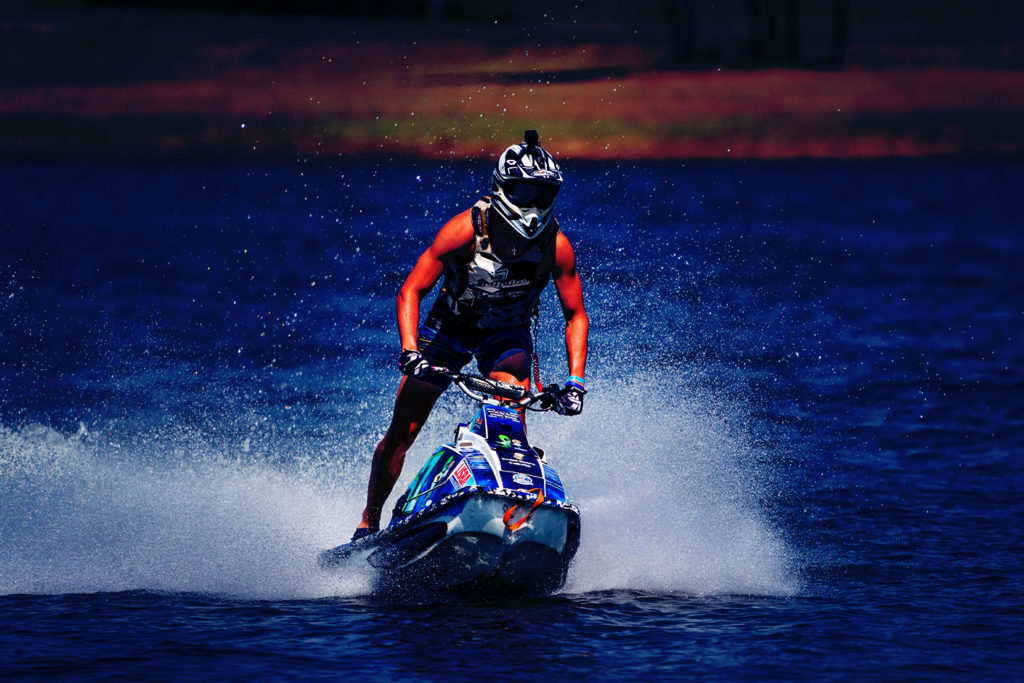Jet skis are designed to be buoyant and resistant to sinking due to several key design features and materials used in their construction…
- Hull Design – Jet skis typically have hulls that are shaped to displace water efficiently and provide buoyancy. The hulls are often made from fiberglass, plastic, or other buoyant materials that help keep the jet ski afloat.
- Closed-Loop Cooling System – Most modern jet skis are equipped with a closed-loop cooling system for their engines. This system circulates coolant through the engine and exhaust, keeping the engine cool without relying on direct water intake. This design helps prevent water from entering the engine compartment and potentially causing it to sink.
- Bilge Pump – Jet skis are often equipped with a bilge pump that automatically activates to remove water that may enter the hull. This helps prevent the accumulation of water inside the jet ski, maintain buoyancy, and prevent sinking.
- Sealed Compartments – Critical areas such as the engine compartment and storage compartments are often sealed to prevent water ingress. This helps maintain buoyancy and protects internal components from water damage.
- Foam Buoyancy – Some jet skis incorporate foam buoyancy materials into their hulls or compartments. These materials provide additional buoyancy and help keep the jet ski afloat even if the hull is breached or damaged.
- Drain Plugs – Jet skis are equipped with drain plugs that can be removed to drain any water that may accumulate inside the hull. This is particularly useful for draining water after use or maintenance.
- Safety Features – Manufacturers design jet skis with safety features such as floatation devices, emergency cut-off switches (kill switches), and bright-colored hulls to aid in visibility and safety in case of accidents.
The combination of these design features and materials ensures that jet skis remain buoyant and resistant to sinking under normal operating conditions. Proper maintenance and care are still essential to ensure these safety features function correctly and to prevent water intrusion that could compromise the jet ski’s buoyancy.



